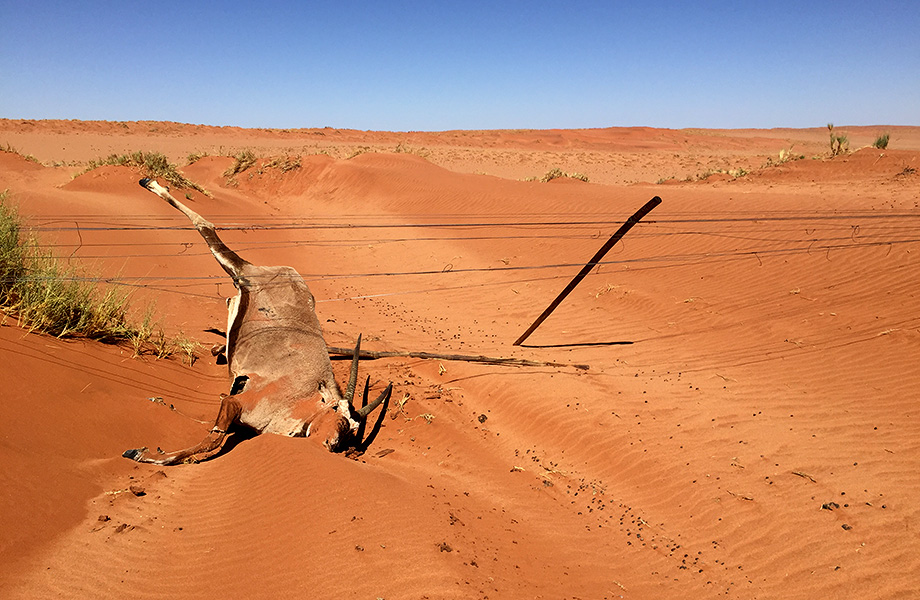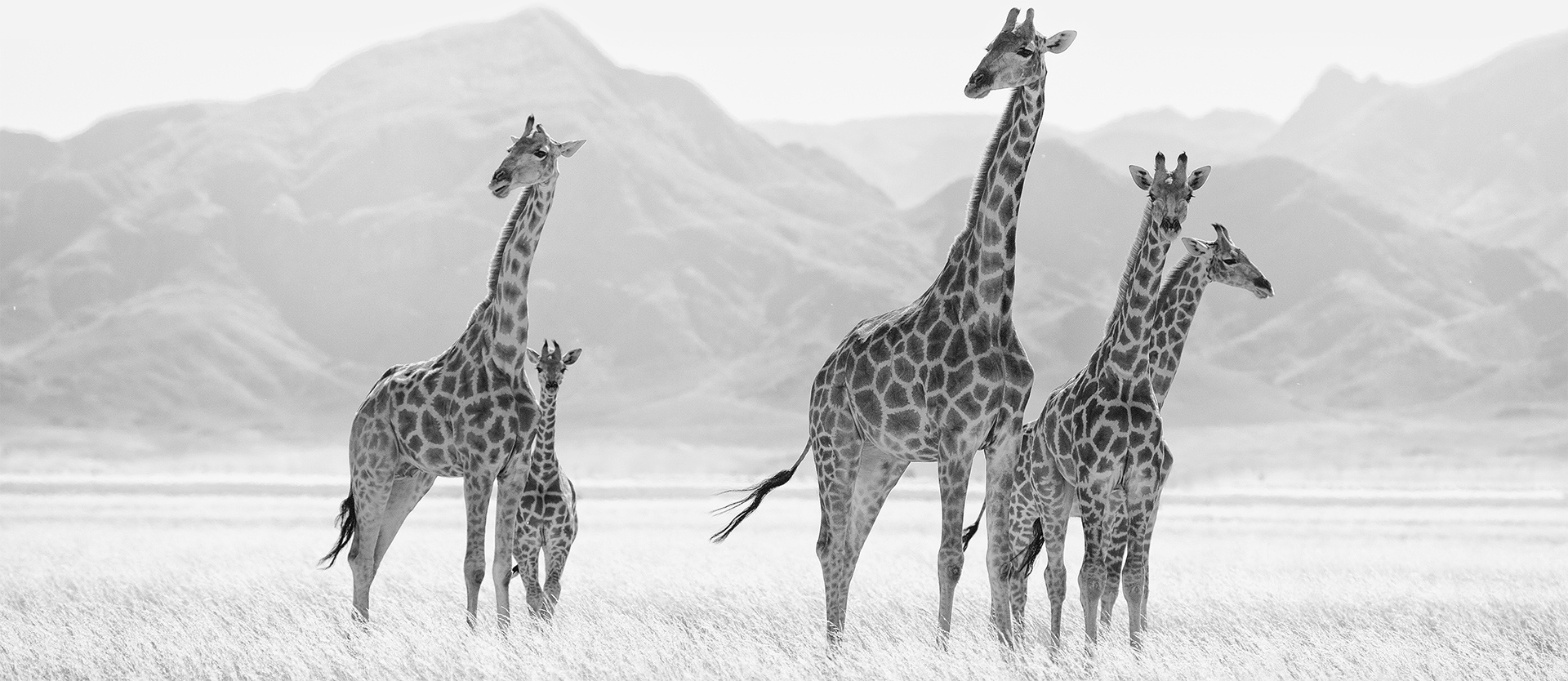Farming and Fences
The Challenge
For generations, wildlife survived in this stark and unforgiving landscape, migrating in response to changing climate and grazing conditions, moving from west to east, following the rains. In the 1950’s some of the Pro-Namib land was given as a reward to soldiers who fought for the Allies in the Second World War. These farms were known as Soldate Plaase or Soldier’s Farms. For the next several decades, livestock farmers eked out a subsistence living here in conditions unsuitable for farming – and with negative impacts on wildlife. Springbok, oryx, zebra, and other ungulates competed with livestock for grazing and were in most cases hunted to local extinction. Predators, such as jackal, cheetah, leopard, hyena, and wild dogs were actively eliminated.


When Oryx try to cross fences they often get their hooves trapped.
As farms grew, the land was sliced into pastures and fenced, cutting off migration and sparking human-wildlife conflict. Roads and other infrastructure added to habitat loss and fragmentation. Today, some of this land is still owned by grass and livestock farmers. Oryx and springbok migrating from protected areas are still hunted for meat and to reduce grazing pressure, sometimes in large numbers.

The ProNamib Trust
The ProNamib Trust was established in March 2020 in order to facilitate the acquisition of land for conservation and to raise funds for the Environment.

